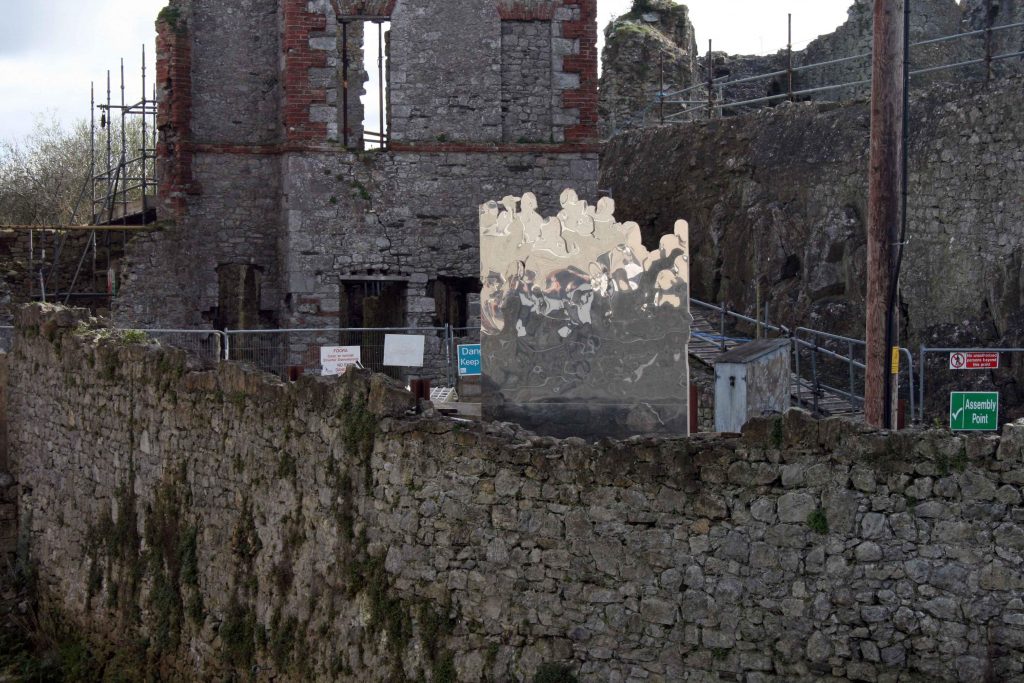16 March–25 October 2012
Askeaton contemporary arts
Askeaton Contemporary Arts commissioned a selection of prominent Irish artists to produce new artworks based around the town’s Hellfire Club legacy.
Upon an island in the middle of Askeaton, the remains of a Hellfire Club can be seen. Set up in the mid 1700s by the Duke of Wharton throughout the UK and Ireland, most Hellfire Clubs were soon outlawed and shut down. However, the Askeaton club, founded in 1740 and the most westerly branch of the organisation, probably stayed in existence until the end of the century and received visitors from near and far. Known as a satirical gentleman’s club, those who met there considered it as a way of shocking the outside world. The supposed president was the Devil, although the members themselves did not apparently worship demons or the Devil, but called themselves devils. Ceremonial feasts took place, all washed down with alcoholic punch. While lurid tales are often recounted in local folklore of other outrageous rituals enacted, very little remaining information or evidence exists of the activities of the Askeaton Hellfire.
Today, the club building is inaccessible to the public, as the OPW currently tries to stabilise the building from continued collapse since its abandonment in the 1800s. Around this site of physical decay, featured artists have considered the Hellfire history, its non-conformist allusions to the society of the 1700s, and its material presence as a crumbling ruin in the middle of a small Irish countryside town. In partnership with ICI Independent Curator’s International New York, a public event with Sean Lynch, Michele Horrigan and Amanda Ralph interrogated relationships of art and heritage, and showcased the project to American audiences.
Diana Copperwhite
Magpie
Diana Copperwhite’s sculpture is sited beside the Hellfire ruin. It features polished stainless steel shapes that formally evoke the profiles of James Worsdale’s 1740 group portrait of the Askeaton Hellfire Club. Copperwhite transposes the outlines of each figure of the group, back to the club’s location, as a reflective, shimmering ghost seen from the town’s bridge. Its precise position, in the workyard of the Office of Public Works, is where an active conservation programme continues daily. Here, stones are moved around, lime mortar is mixed and used to reinforce or rebuild walls around the island complex. A sculpture placed at such a site might initially seem like a nuance, but further investigation points to a function similar to the workmen’s presence: both are subtle engagements with the fragmented material histories onsite.
